Adelaide
On arrival in Adelaide, we were met by Maureen’s cousin Hazel and her husband Ray and they kindly took us to Hahndorf which is a short drive in to the hills from Adelaide.
The small town has a German background so rather than repeat myself I have added a link to a blog about Hahndorf that I posted in 2016. Not much had changed since our first visit because the small town is a protected town.
There was one noticeable change for me because when we visited a German style restaurant for lunch and ordered a German beer for Ray and myself, I was asked to pay $30 deposit for the ‘steins’ and a lot less for the actual beer. I’ve never been asked to pay a deposit for a beer container.
At the end of the lunch, I did receive my deposit back as I paid the bill.
A Stirling coincidence
Melbourne

Our next stop was Melbourne.
In Melbourne we were met by two old friends that we hadn’t seen for thirty-eight years.
We used to live near each other in the early 1980’s when Maureen I built our first house in 1981 in a small (as it was then) town called Sunbury (named after the London Sunbury).
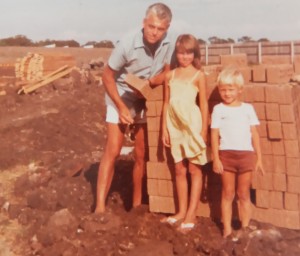 Sometime in 1981, I’m with our two children next to the bricks that would be used to build our home. At that time, we lived in rented accommodation about an hour’s drive from where we planned live.
Sometime in 1981, I’m with our two children next to the bricks that would be used to build our home. At that time, we lived in rented accommodation about an hour’s drive from where we planned live.
We visited the sight to make sure that the correct bricks (as in colour & texture) had been delivered. I did not want anything to go wrong. As you can see the area was wide open, the only thing that had already been built was the road through the anticipated new suburb.
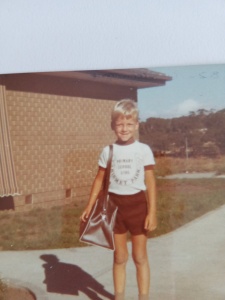
We were keen to move in to be ready for the new school year for our son & daughter.
The school was a new school, and we wanted our two children to start school at the same time as every other child in the area.
The above is my son on his first day at school, our daughter experienced her first day at school in the UK.
I posted the above to show the wide-open space that was in front of our house.
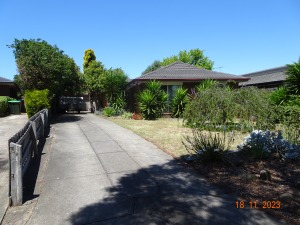
Our first house built in 1981 – photograph taken 2023 – how time flies.
When we moved in we didn’t have a neighbour on both sides – the one on the left was being built and the other side was an empty plot of land.
I looked across the road and the views were of houses as far as I could see.
We used to be able to see Mount Macedon, where the movie Picnic at Hanging Rock was set, now the view was no more. Below is a link to a blog about the bush fire that we experienced in Sunbury, our first Australian bush fire. The first half of the post has nothing to do with the bushfire.
Christmas 1981 to Feb 1983.
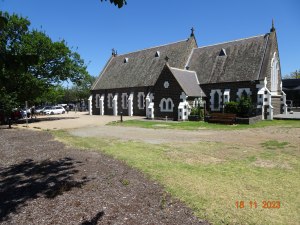
The one place in Sunbury that had not changed in 38 years was the local church, St Mary’s Anglican church.

In 2017 the church congregation celebrated the 150th year of Christian services.
New shopping centre, car yards on the outskirts, new home site areas pegged out for house after house, the place had grown.
On our return to the ship, I tried to capture the new feel of Melbourne. When we lived in Melbourne the drive from home was along country lanes to the airport area followed by freeway into the city.
Today the three-lane freeway has been upgraded to a five (I think) lane freeway that allows for high speed travel. Passing the airport, which was opened in 1970, the freeway continued a lot closer to Sunbury than I remembered and much of the land around the airport that used to be fields is now a cargo village and other support industries for the airport.
I suppose this is progress.
The journey back to the ship would take us over the West Gate Bridge, which opened in 1978. I lived in Melbourne from late 1980 t0 1985 and never had cause to use this bridge, but we would today.
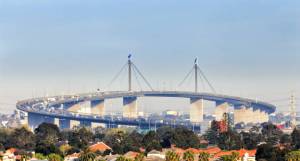
Above picture off the internet
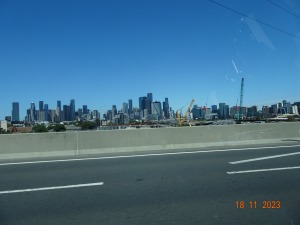
Melbourne CBD as we approached the West Gate Bridge that took us over the Yarra River.
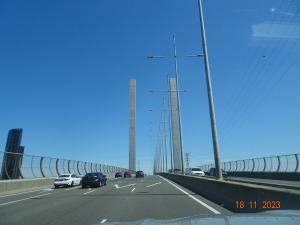
The West Gate Bridge as we approached the area where the cruise ship was berthed. The bridge carried five lanes each way at high speed, and I was glad that I was not navigating.
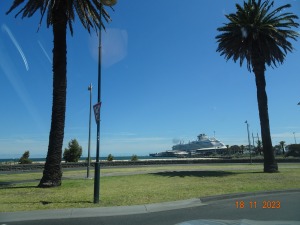
I took the above from the road to illustrate how green the area is where the cruise ships dock along a dedicated cruise pier.
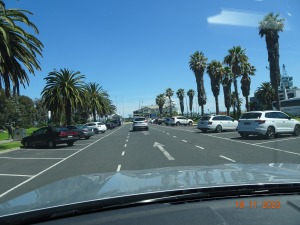
At the end of the street our cruise ship can be seen
It was farewell Melbourne.




